Related Research Articles

A wall is a structure and a surface that defines an area; carries a load; provides security, shelter, or soundproofing; or, is decorative. There are many kinds of walls, including:

Lumber, also known as timber, is wood that has been processed into beams and planks, a stage in the process of wood production. Lumber is mainly used for structural purposes but has many other uses as well.
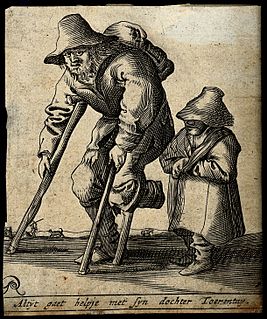
A cripple is a person or animal with a physical disability, particularly one who is unable to walk because of an injury or illness. The word was recorded as early as 950 AD, and derives from the Proto-Germanic krupilaz. The German and Dutch words Krüppel and kreupel are cognates.

A joist is a horizontal structural member used in framing to span an open space, often between beams that subsequently transfer loads to vertical members. When incorporated into a floor framing system, joists serve to provide stiffness to the subfloor sheathing, allowing it to function as a horizontal diaphragm. Joists are often doubled or tripled, placed side by side, where conditions warrant, such as where wall partitions require support.

A framer is someone who frames, or someone who constructs.

Framing, in construction, is the fitting together of pieces to give a structure support and shape. Framing materials are usually wood, engineered wood, or structural steel. The alternative to framed construction is generally called mass wall construction, where horizontal layers of stacked materials such as log building, masonry, rammed earth, adobe, etc. are used without framing.
A tie, strap, tie rod, eyebar, guy-wire, suspension cables, or wire ropes, are examples of linear structural components designed to resist tension. It is the opposite of a strut or column, which is designed to resist compression. Ties may be made of any tension resisting material.
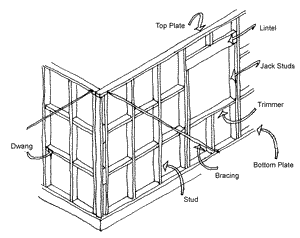
In construction, a nogging or nogging piece, dwang, blocking, noggin, or nogs, is a horizontal bracing piece used between wall studs or floor joists to give rigidity to the wall or floor frames of a building. Noggings may be made of timber, steel, or aluminium. If made of timber they are cut slightly longer than the space they fit into, and are driven into place so they fit tightly or are rabbeted into the wall stud. Timber noggings are fixed to the perimeter, abutments, or for the purpose of framing any openings using suitable fixings.
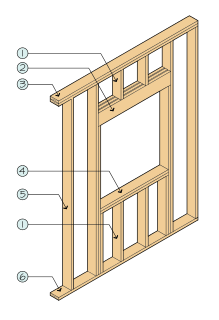
A plate or wall plate is a horizontal, structural, load-bearing member in wooden building framing.

In architecture, a bay is the space between architectural elements, or a recess or compartment. The term bay comes from Old French baie, meaning an opening or hole.
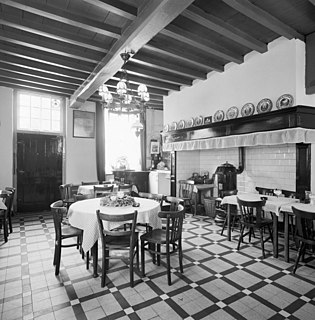
A bressummer, breastsummer, summer beam is a load-bearing beam in a timber-framed building. The word summer derived from sumpter or French sommier, "a pack horse", meaning "bearing great burden or weight". "To support a superincumbent wall", "any beast of burden", and in this way is similar to a wall plate.

A wall stud is a vertical repetitive framing member in a building's wall of smaller cross section than a post. It is a fundamental element in frame building.

Blocking is the use of short pieces of dimensional lumber in wood framed construction to brace longer members or to provide grounds for fixings.
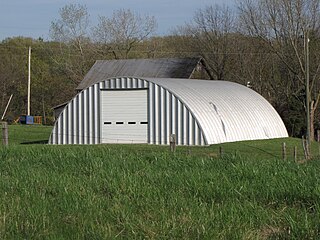
A steel building is a metal structure fabricated with steel for the internal support and for exterior cladding, as opposed to steel framed buildings which generally use other materials for floors, walls, and external envelope. Steel buildings are used for a variety of purposes including storage, work spaces and living accommodation. They are classified into specific types depending on how they are used.

A sill plate or sole plate in construction and architecture is the bottom horizontal member of a wall or building to which vertical members are attached. The word "plate" is typically omitted in America and carpenters speak simply of the "sill". Other names are ground plate, ground sill, groundsel, and midnight sill.
In the framing of a deck or floor system, a rim joist is attached perpendicular to the joists, and provides lateral support for the ends of the joists while capping off the end of the floor or deck system. Rim joists are not to be confused with end joists, which are the first and last joists at the ends of a row of joists that make up a floor or deck frame.

Cold-formed steel (CFS) is the common term for steel products shaped by cold-working processes carried out near room temperature, such as rolling, pressing, stamping, bending, etc. Stock bars and sheets of cold-rolled steel (CRS) are commonly used in all areas of manufacturing. The terms are opposed to hot-formed steel and hot-rolled steel.
A post is a main vertical or leaning support in a structure similar to a column or pillar but the term post generally refers to a timber but may be metal or stone. A stud in wooden or metal building construction is similar but lighter duty than a post and a strut may be similar to a stud or act as a brace. In the U.K. a strut may be very similar to a post but not carry a beam. In wood construction posts normally land on a sill, but in rare types of buildings the post may continue through to the foundation called an interrupted sill or into the ground called earthfast, post in ground, or posthole construction. A post is also a fundamental element in a fence. The terms "jack" and "cripple" are used with shortened studs and rafters but not posts, except in the specialized vocabulary of shoring.

American historic carpentry is the historic methods with which wooden buildings were built in what is now the United States since European settlement. A number of methods were used to form the wooden walls and the types of structural carpentry are often defined by the wall, floor, and roof construction such as log, timber framed, balloon framed, or stacked plank. Some types of historic houses are called plank houses but plank house has several meanings which are discussed below. Roofs were almost always framed with wood, sometimes with timber roof trusses. Stone and brick buildings also have some wood framing for floors, interior walls and roofs.
This glossary of structural engineering terms pertains specifically to structural engineering and its sub-disciplines. Please see glossary of engineering for a broad overview of the major concepts of engineering.
References
- ↑ "Architectural Graphic Standards Online" . Retrieved 2016-07-25.
- ↑ Ching, Francis D. K. (2001). Building Construction Illustrated, 3rd Edition . John Wiley & Sons, Inc. pp. 4.21, 4.31. ISBN 0-471-35898-3.
- ↑ Glossary, building terms, word definitions. Define Cripple Stud
- ↑ Hometime Glossary – Framing
- ↑ Building a Wall 3 - Three Stud Corner and Windows | DoItYourself.com